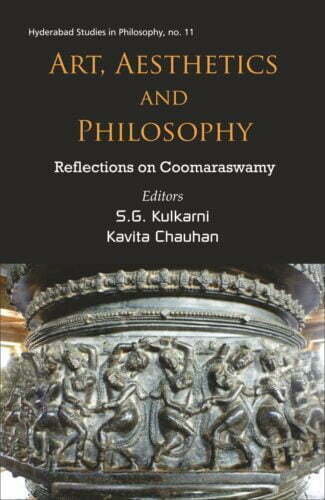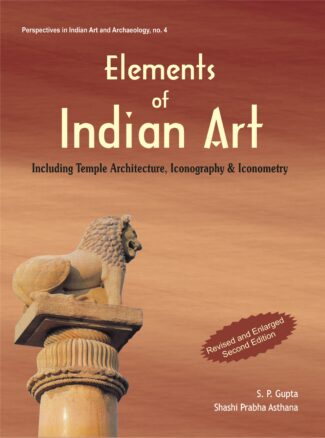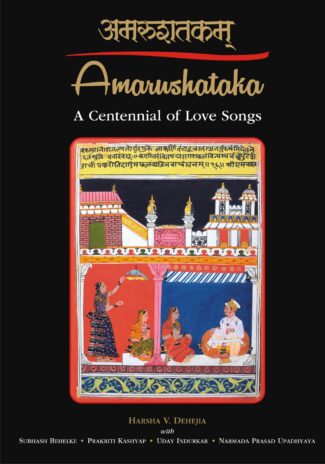-
Borobudur...
Borobudur
Pyramid of the Cosmic Buddha by: Caesar Voute₹4,680.00
ISBN: 9788124604038
Year Of Publication: 2008
Edition: 1st Edition
Pages : xxiv, 327 p.
Bibliographic Details : 2 folded mandalas; 8 architectural drawings; 163 coloured photographs; 20 B/w figures; Appendix; Glossary; Bibliography; Index
Language : English
Binding : Hardcover
Publisher: D.K. Printworld Pvt. Ltd.
Size: 30
Weight: 3250
Borobudur was constructed during the eighth century as a guide to the Noble Path of the Buddha. Born from silence and unfolding into the serenity of the other shore, it expresses the glory of Indonesia’s awareness and creativity, the smile of her plastic forms over the centuries as well as her travels along the edge of thoughts that cross the endless corridors of memory.
Though the Western world rediscovered this magnificent structure almost 200 years ago, this sacred place nonetheless remains seated in its enigmatic depth, engulfed in vaporous illusions, waiting for someone to find the base simplicity of its Truth. This book is a catalyst and invites adventurous minds to find new directionJs by bringing into focus the vast universe of the Borobudur in order to cultivate the Way to weeding out error. The questions posed or solutions offered herein are like water and waves: different yet identical in essence. They stir discussion.
One of the special contributions of this book lies in its correlating the cyclical movements of the Sun and Moon with the numerical symbolism of Borobudur. The authors cite the magical effect of the Sun suddenly appearing out of the volcano Merapi and empowering the Borobudur-mountain with its radiant energy in poetic imagery. This magic moment of satori or enlightenment echoes the experiences of the unknown Shailendra monarch who had commissioned the monument’s construction and the inspiration that made the architect envision this Buddhist wonder.
Foreword
— Lokesh Chandra
Preface
— Mark Long and Lokesh Chandra
Acknowledgement
List of Illustrations
List of Tables
Introduction
Part I : HISTORICAL DEVELOPMENTS
- Distant Beginnings
The EL Dorado of the Asian World
An Eclectic Approach to Cultural Borrowing
Early Inscriptional Evidence
The Javanese Kingdom of Taruma
A Cataclysmic Event
Java’s Book of Ancient Kings
A Devastating Impact
The Emergence of Shrivijaya
- The Rise and Fall of Java’s “Classic Age” Civilization
The Illustrious King Sanjaya
Lord of the Mountain
The Maharaja of Zabag
An Ambitious Temple-Building Programme
Candi Sewu, Lumbung and Bubrah
The Abhayagiri Monastery
Candi Plaosan, Sari and Sajiwan
The Venuvana Monastery
Candi Mendut, Ngawen, Pawon and Sajiwan
The Shailendra Decline
Kamulan I Bhumisambhara
The Maharaja of the Land of Gold
The Shailendra beyond Java’s Shores
A Calamity of Horrific Proportions
Merapi during Pre-Historic Periods
Other Hypotheses for the Migration to East Java
The Vartanyan Theory
- A Buddhist Foundation
The One Thus Come
Challenging the Hindu World-view
Enduring Symbols of the Buddha’s Continuing Presence
The Elder School
The Greater Vehicle
The Development of Mahayana Buddhism
Tantric Buddhism
An Initiation into the Mandala
Part II: BOROBUDUR AND ITS ENVIRONS
- The Magic of Location
In Harmony with the Local Surroundings
The Descent of the Cosmic River
Local Legends and Indigenous Practices
The Axis of the Universe
The Mount Merapi Sunrise
King, Kraton, Kingdom and Cosmos
Candi Pawon and Candi Mendut
The Lotus Throne on the Lake
The Search in Borobudur’s Vicinity
In Search of the Shailendra Kraton
- An Approach from the East
The Bas-Reliefs on the Monument’s “Hidden Foot”
Ascending the Eastern Staircase
Entering the Bas-Relief Galleries
The Jatakamala
Jataka and Avadanas
The Lalitavisara-sutra
The Gandavyuha
The Bhadracari
Borobudur’s Jina Images
The 72 Jinas at the Summit
At the Apex of the Pyramid
The Name Borobudur
- Building and Restoration Activities
The Ground Plan
Phases of Construction
Bringing the Temple to Life
Ancient Building Techniques
Modern Restoration Ethics and Techniques
Conservation Efforts at Borobudur
The Never-Ending Battle
Part III: AN ARCHITECTURAL REAPPRAISAL
- The Residence of the Divinity
Borobudur’s Foot, Body and Head
Like Demi-Gods Rushing Along the Ways of the Firmament
Borobudur and the Structure of the Vedic Fire Altar
The First Layer of the Fire Altar
The Second Layer
The Third Layer
The Fourth Layer
The Fifth Layer
The Covering Layers of Soil
The Shailendra Cakravartin
Rites of Kingship
The Vastupurusha Mandala at the Summit
On the Road to Kushinagara
- Numerical, Astronomical and Dimensional Symbolism
The Numerical Symbolism of the Jina Images
A “Day” of the Gods on Mount Meru
Temporal Symbolism on the Lower Levels
Solar Symbolism in the Lalitavistara Reliefs
The Numerical Symbolism of the Summit
A Time without Shadows
The Legend of King “Mountain Stone”
Mirroring the Celestial Realm
Dimensional Symbolism
- Candi Mendut
The Images Inside the Main Cella
The Vestibule Reliefs
The Bas-Reliefs on the Cella Partition Walls
The Footer Reliefs of the 2nd Ambulatory Path
The Bas-Reliefs on the Staircase Wings
The Ground-Level Ambulatory Path
A Rooftop Mandala?
A Lighthouse of Buddhism
Part IV: DECODING THE MESSAGE
- The Ghost in the Machine
The Matrix and the Diamond World Mandalas
Eight Great Objections
The Resemblance is Overly Superficial and Vague
The Lack of Numerical Conformity
Borobudur Uniquely Portrays Six Jina Types
The Unexplained Presence of Narrative Bas-Reliefs
The Lack of Symbols that are Specifically Tantric
The Jina Images are too Physically Remote
The Absence of Evidence Pointing to an Esoteric Ritual Intent
The Absence of Image Diversity
A Sinhalese Connection?
A Javanese Master of the Garbhadatu Mandala
The Influence of Nalanda
- The Unfolding of Divinity
Pacing the Void
The Stages of the “Revelation-Enlightenment”
The Akanishtha Heaven at Borobudur
The Awakening of the Complete, Manifest Buddha
The Production of a Four-Faced Vairocana at Borobudur?
The Tathagata’s Three Mystery Bodies
Suggestions for Further Research
Appendices
Appendix A: Architectural Drawings
Appendix B: Glossary
Appendix C: Bibliography
Terms Index







There are no reviews yet.